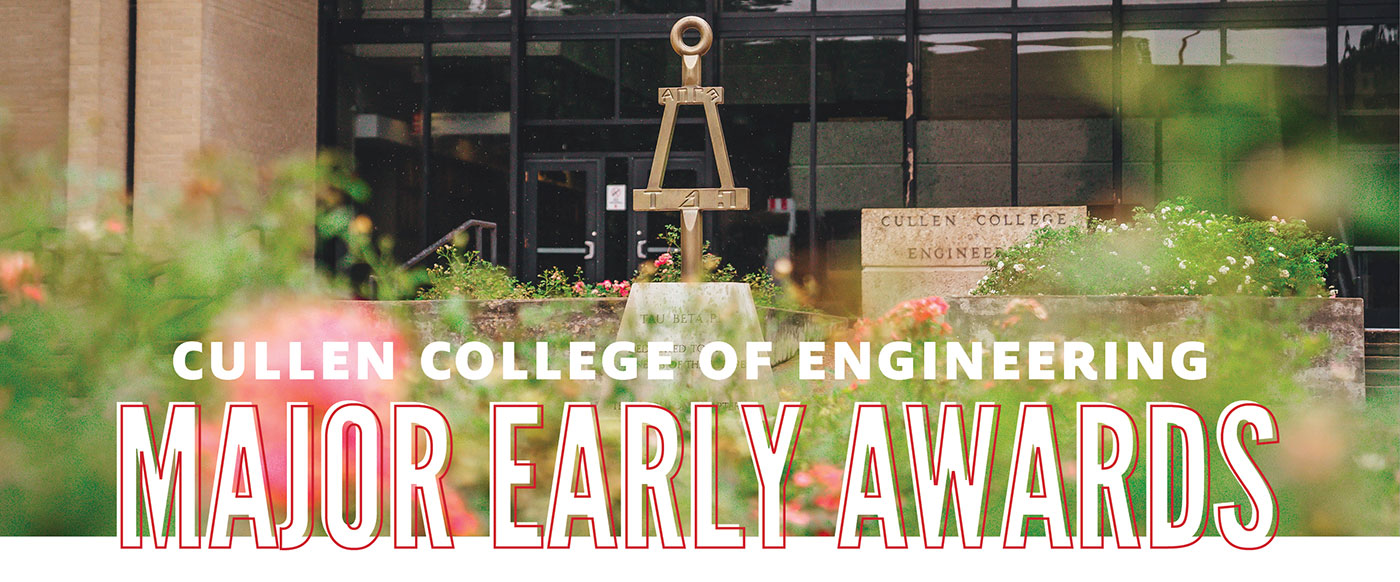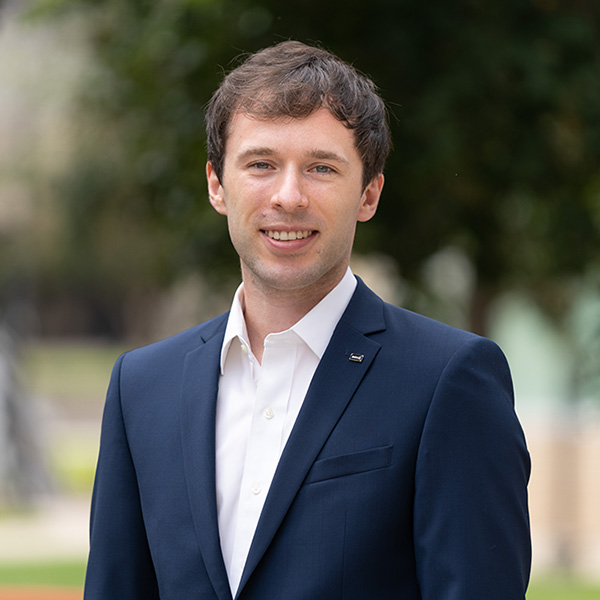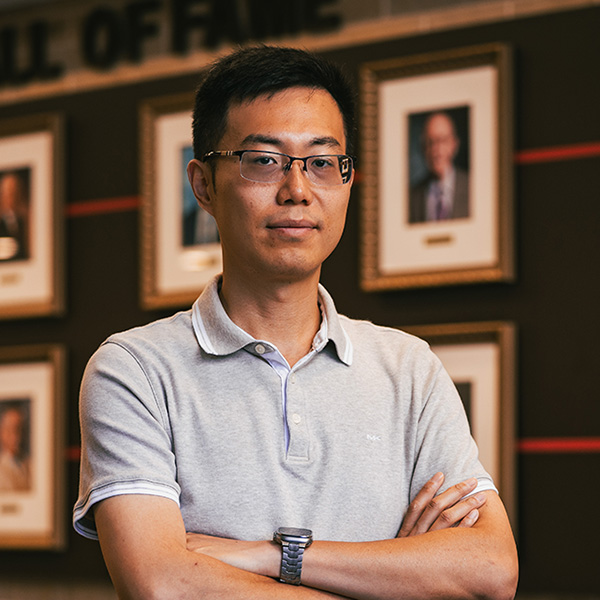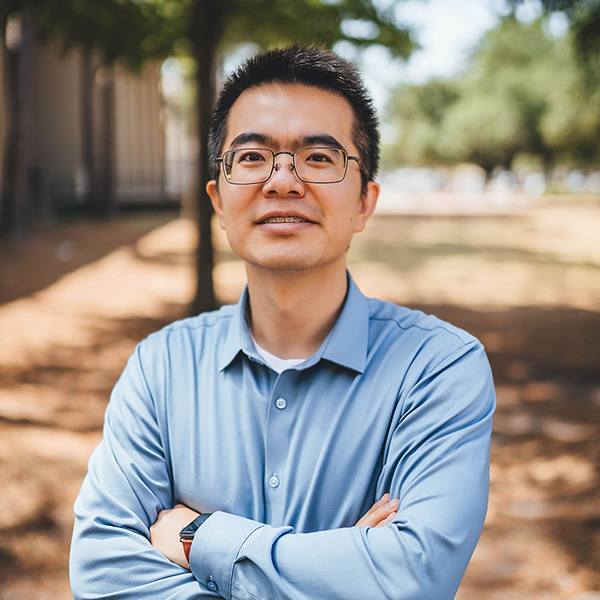
Daniel Floryan
By Stephen Greenwell

Daniel Floryan, Kalsi Assistant Professor of Mechanical & Aerospace Engineering, has been selected for the 2025 Young Investigator Program Award by the Air Force Office of Scientific Research.
His research proposal, “Breaking Energy Efficiency Limits in Unsteady Wall-Bounded Flows,” was chosen from more than 150 proposals. The total award amount is $450,000, spanning three years.
When airplanes fly through air, they expend tremendous energy cutting through the friction of the air. There is a long-standing interest in manipulating the airflow close to the airplane to reduce the required energy. Unfortunately, despite devoted research efforts to it over the years, net energy savings have plateaued around 10 percent.
We seek to develop a new class of flow control strategies that can break the established energy savings limits.Daniel Floryan
“Our ability to surpass this level of energy savings is ultimately limited by energy bounds that derive from the governing dynamics of fluid flows,” Floryan said. “We seek to develop a new class of flow control strategies that can break the established energy savings limits. This effort is guided by our theory that suggests that multi-modal control has great potential for energy savings.”
Once the new flow control strategies have been developed, his research will attempt to combine newly understood physical mechanisms with methods from optimal control theory to refine control strategies, resulting in a step-change in the energy-savings capabilities of flow control.
The Air Force Young Investigator Research Program (YIP) supports early in career scientists and engineers showing exceptional ability and promise for conducting basic research. The program objective is to foster creative basic research in science and engineering, enhance early career development of outstanding young investigators, and increase opportunities for the young investigator to recognize the Air Force and Space Force mission and related challenges in science and engineering.
Floryan joined the faculty of the Cullen College of Engineering in 2021.
Zheng Fan
By Alex Keimig

Assistant Professor of Mechanical Engineering Technology Zheng Fan has been awarded $549,771 for his CAREER Award proposal, Understanding the Formation of Pore-Free Interlayers through Automated in situ Diagnosis to Tame Lithium Metal.
This project will investigate a new composite material, a metal-carbon mixed ionic-electronic conductor (c-MIEC), as a solution for overcoming interface issues common to current iterations of high storage density solid-state lithium metal batteries. Enhancing the performance and scalability of solid-state lithium metal batteries to improve range and performance will be crucial in the broader implementation of next-generation electric vehicles.
Fan describes himself as a materials scientist with a major focus on battery study and development, but this project goes far beyond the development of new battery technologies.
“My proposal is also for a new research framework in materials science — not just for battery design or chemistry,” said Fan. “I’m going to integrate automatic experimentation, including sample fabrication and characterization, connected with AI analysis like machine learning algorithms to optimize the systems we select and use.”
“We want to transform conventional material research and experiments — involving lots of manual labor and tools, making them slow and possibly involving human errors — and transform this process to an automatic, fast, data-rich and AI-guided research process,” he added.
Most cutting-edge experimental research tools still require manual human operation. Fan seeks to integrate these tools into a scalable, closed loop of automatic operation and AI-driven data analysis that will reduce human effort and error while increasing the rate of successful discovery.
“In battery science, there will always be a lot of specimens to test different properties — chemical properties, structural properties, mechanical properties — and every property should be one [individual] sample, but that takes a lot of time.”
In fact, he estimates that a manually-derived battery sample by a student takes about two hours.
Fan studied mechanical design as an undergraduate and focused on robotics during his master's degree, only settling into nano and micro materials while pursuing his PhD. This path, he believes, allows him to bring a unique perspective to his research.
“I think, due to my background… I have a broader approach in thinking about the whole process of the experiment. I can also see a bottleneck in the current pursuit of scientific discovery: although nowadays we have many experimental tools like the high-resolution microscope, the spectroscope, the x-ray, we scientists still have to operate them by ourselves.
“But if we have this automated lab assistant, we can break this limitation. Humans have to take a rest, have to eat, but the robot will not — and it will not involve errors,” he added.
Fan expects the standardized automation of this research process to reduce battery fabrication time and allow it to run continuously, taking data collection “to a new level” while leaving researchers more time for critical thinking.
“Automation is no longer a luxury. This work will redefine the capabilities of small research groups. By creating an automated experimentation framework, we empower more researchers to tackle grand scientific challenges,” he said.
Fan will also develop a related virtual lab wherein selected interested students will have the opportunity to participate in research.
“Decentralization is the key to this project, not only in the research plan, but also for the education. We are going to find future researchers and engineers. Conventionally, we would just invite certain schools or certain districts, but my principle is to decentralize the approach. Any student interested in my research will be invited, and in my proposal, this decentralization is essential. I want to break the conventional resource concentration patterns for research and education and make them accessible to everyone, so that everyone has a chance to be involved,” said Fan.
“My hope is that we will develop a global benchmark in new patterns for data and new framework for materials science research — a single-PI laboratory with a closed loop and automatic experimentations that can be adopted in other industries.
“I believe this research will be a cultural shift,” he added. “Right now, people may be afraid of more automation — they are afraid of whether they can let their life depend on a machine — but I think we should embrace it. It will be the future for automations to change not only our daily lives, but our scientific research.”
Bo Zhao
By Alex Keimig

Mechanical and Aerospace Engineering’s Assistant Professor Bo Zhao has been awarded $549,770 for his NSF CAREER proposal, “Understanding and Controlling Nonreciprocal Thermal Radiation Exchange Between Surfaces.”
The project seeks to challenge a centuries-old law, which would fundamentally change our understanding of the characteristics of light transport and potentially have a significant impact on the efficiency of solar energy harvesting and thermal management systems.
“Water flows because water at a higher elevation has more potential energy than water at a lower elevation; the flow is driven by this potential energy difference. What I do is another energy flow: not water, but sunlight,” said Zhao.
Sunlight also carries energy in its waves — electromagnetic waves — but flows in a slightly different way.
“Usually a high-potential object emits energy outwards, but for sunlight or other similar radiation or electromagnetic waves, the reverse can happen: something cold can also transport [energy] back to the hotter high-potential object. My research is trying to remove this constraint for light transport,” he said.
One of many reasons that this research is of interest is the potential for increased efficiency in solar energy capture. If sunlight could be made to only flow unidirectionally, without transporting any energy back toward the sun itself, then cascaded energy harvesting devices could allow for more complete and more useful collection of solar energy without waste due to reemission.
“From a fundamental perspective,” said Zhao, “what I do is try to break the so-called reciprocity of this transport process. I want to make light transport as one-way as possible.”
In other words, if reciprocity is currently a window through which light can travel in either direction, Zhao is working to create a one-way window, transparent only in one direction.
what I do is try to break the so-called reciprocity of this transport process. I want to make light transport as one-way as possible.Bo Zhao
“There’s a very interesting, very old — classic — law, like Newton’s laws in mechanics, in our field of thermal radiation: Kirchhoff’s Law. Kirchhoff’s Law of thermal radiation has been around for nearly two centuries, and when I was doing my postdoc, I realized that we have the possibility to break that law,” he said. “That inspired me to keep working in this direction and look into how we can, first of all, enable that law-breaking effect, and second of all, leverage that to achieve new thermal and energy applications. It’s basically a new direction that hasn’t been sought before.”
“In that sense, I think this is a very unique and exciting opportunity. Much of this knowledge will be useful and transformable to other wave phenomena, such as mechanical waves, electron, and phonon. I think that eventually, the impact is going to be enormous.”
As part of the project, Zhao will also operate a YouTube channel called “Everything Thermal” to help bring accessible explanations of higher-level concepts and research in thermal photonics to students across the world.
“I realize the importance and how rewarding it can be if you can engage more and more people in science. Of course, as a teacher, we do that by going into the classroom, but we are living in this digital world, and people now have more and more easy access to digital resources. How do we leverage those opportunities to disseminate knowledge in a way that makes physics and engineering easier, more engaging, entertaining, and effective?”
“Everything Thermal” aims to do just that. Zhao is also excited to involve undergraduate students in the project, because “the best way to learn something is to teach it.”
“In that way, by making a video, they’re teaching themselves to explain the concept to other people. Students will therefore not only learn the concept, but also possibly find the process rewarding themselves. We will also be using various AI tools to create the videos. In a lot of ways, I think this is a nice vehicle for our undergraduate students to better learn engineering knowledge and AI tools, engage the public, and disseminate the knowledge that we have.”